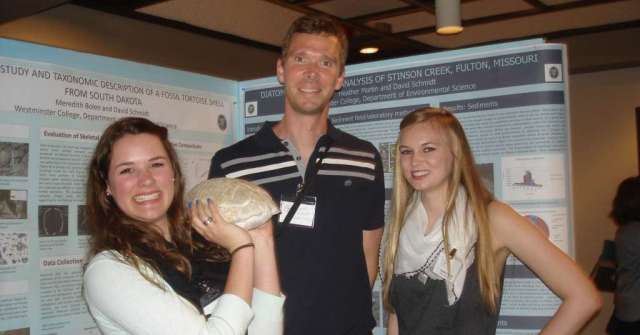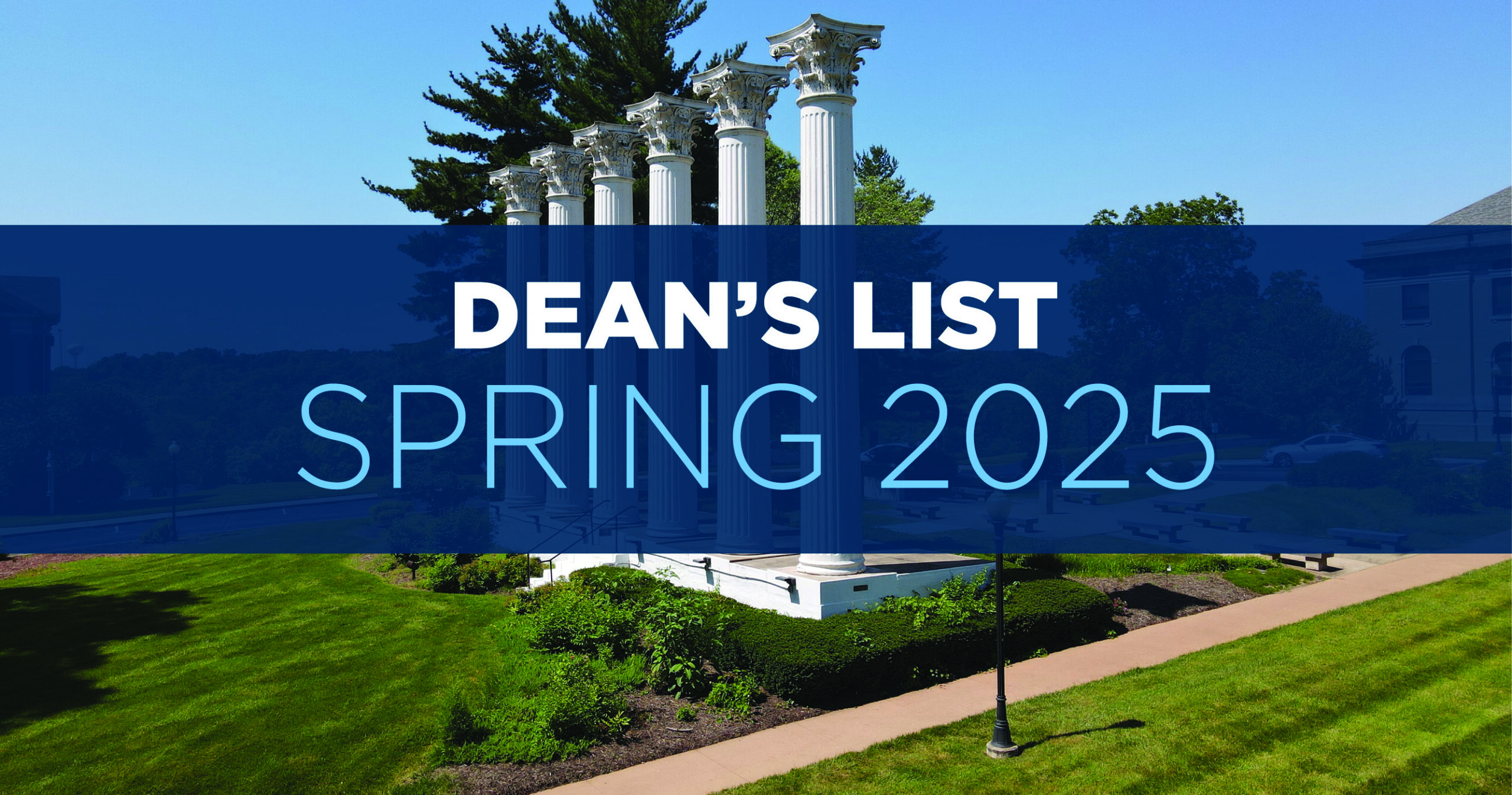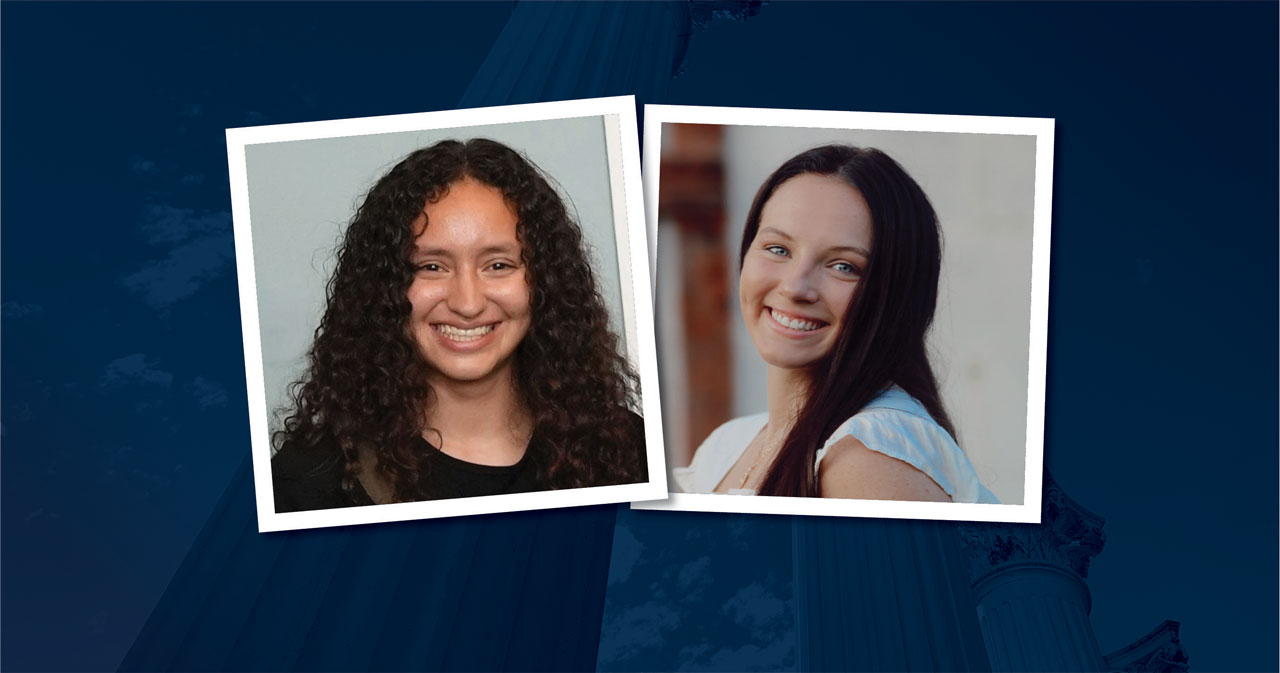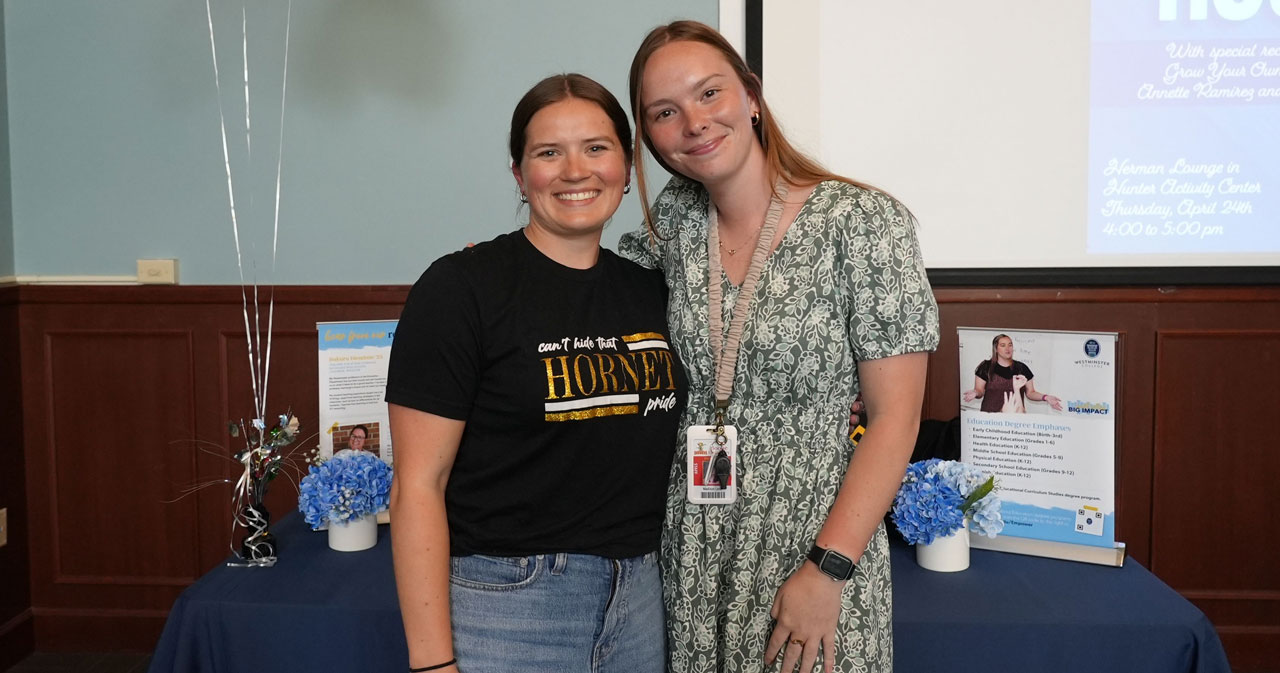Meredith Bolen (Left) Heather Martin (Right) with Dr. Schmidt (Middle) at the Missouri Academy of Science
Those attending the Missouri Academy of Science in Warrensburg, MO this year received a strong showing from the Environmental Science Department of Westminster College.
Four Westminster junior students–Astrid Appert-Lund from Stockholm, Sweden; Cassie Beahler from Liberty, MO; Meredith Bolen from Houston, TX; and Heather Martin from Pleasant Hill, MO—all presented the results from their year of academic research at the state meeting.
Bolen won first place in the Geology/Geography section of the poster competition.

In her oral presentation Appert-Lund presented the results from her use of high performance liquid chromatography to determine if antibiotics given to cows was detectable in store-bought milk.
Beahler conducted a study to see if antibiotics have an effect on seed germination and growth by testing two antibiotic concentrates on corn and soybeans. She will continue research in this field to see if she can determine if antibiotics get incorporated into the plant tissue we eat.

Bolen’s research is trying to determine the gender, age and taxonomic identification and how much of the body mass is present for a 32 million year old fossil tortoise recovered from the badlands area of South Dakota in 2012.
Martin’s research involved collecting sediment and diatom ( a major form of algae) samples along three miles of Stinson Creek to determine the types of sedimentation in the channel, how much of the sediment is synthetic materials and whether diatoms are affected by acid waters coming from abandoned coal strips up stream.

“These students represented Westminster with incredible composure and professionalism,” says Dr. David Schmidt, the Westminster environmental science professor who sponsored the group. “We are very proud of all of them.”
The Missouri Academy of Science held its organizational meeting April 13-14, 1934, with 250 people in attendance. At the December meeting that year, more than 400 people registered and by May, 1935 the Academy had approximately 750 members. Activities were disrupted and came to a halt due to World War II. In 1963, twelve people reactivated the Academy and today membership has grown to more than 800.
The Academy regularly holds meetings at 16 different sites around the state and awards modest grants to projects proposed by high school and college students.
This is the editorial account for Westminster College news team. Please feel free to get in touch if you have any questions or comments.







You must be logged in to post a comment.